Table of Contents
What Is Beef Seasoning Powder?
Beef seasoning powder is a purpose-formulated spice blend specifically designed to enhance the natural flavors of beef through a balanced combination of salt, garlic powder, onion powder, paprika, black pepper, and complementary herbs. Unlike generic seasoning mixes, authentic beef seasoning powders contain ingredients that chemically interact with the proteins in beef to create more complex flavor compounds during cooking, resulting in noticeably richer-tasting dishes with minimal effort.
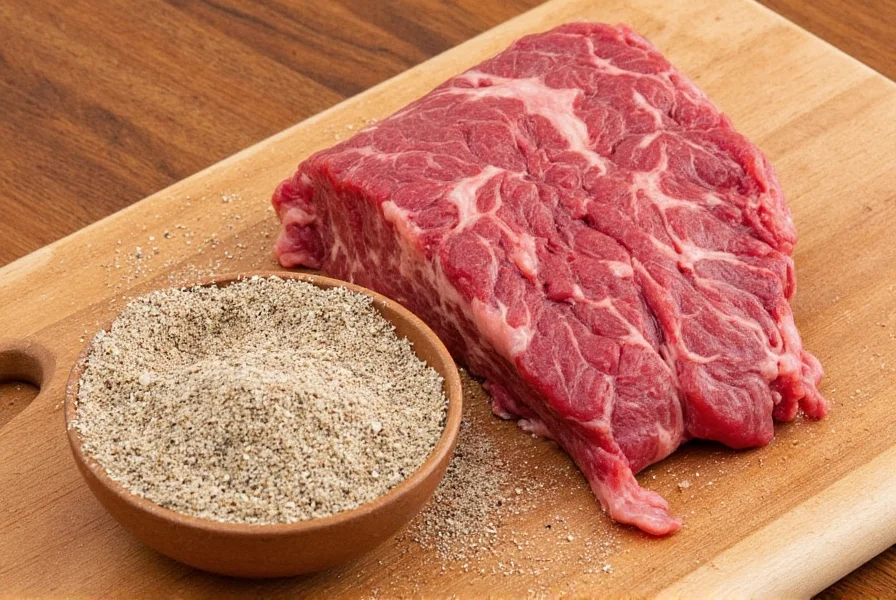
The most effective beef seasoning powders maintain a precise 3:2:1 ratio of salt to savory elements (garlic and onion) to aromatic spices (paprika, black pepper, and herbs). This ratio ensures proper flavor development without overwhelming the natural taste of the beef. Premium formulations often include umami-enhancing ingredients like dried mushroom powder or tomato powder, which react with the meat's proteins during the Maillard reaction to create deeper flavor complexity.
Benefits of Using Beef Seasoning Powder
Using a purpose-formulated beef seasoning powder offers specific advantages that generic spice blends cannot match:
- Scientific Flavor Enhancement: The precise balance of ingredients triggers specific chemical reactions with beef proteins, creating more complex flavor compounds than individual spices would produce.
- Consistent Results: Professional-grade blends maintain exact ratios, eliminating guesswork for restaurant-quality results at home.
- Time Efficiency: Achieve deep flavor development in 15-20 minutes that would normally require hours of marinating with individual spices.
- Cutting-Specific Formulations: Premium brands offer different blends optimized for specific cuts (ribeye vs. brisket vs. ground beef) based on fat content and protein structure.
- Controlled Sodium Levels: Better formulations use balanced sodium compounds that enhance flavor without making the meat taste overly salty.

How to Use Beef Seasoning Powder
For optimal flavor development, follow these scientifically-backed application techniques:
- Application Ratio: Use exactly 1.5 teaspoons per pound of beef for steaks and roasts. For ground beef dishes, reduce to 1 teaspoon per pound to prevent overpowering.
- Dry-Brine Method: Apply seasoning 45-60 minutes before cooking to allow salt to penetrate and protein modification to begin. Cover and refrigerate during this time.
- Oil Activation: Before applying seasoning, lightly coat meat with high-smoke point oil (avocado or grapeseed). This helps hydrophobic flavor compounds in the seasoning adhere better to the meat surface.
- Rubbing Technique: Use fingertips to apply gentle pressure in circular motions, creating microscopic channels for flavor penetration without damaging muscle fibers.
- Post-Cook Enhancement: For roasts and brisket, sprinkle additional seasoning during the resting phase when meat juices are redistributing.
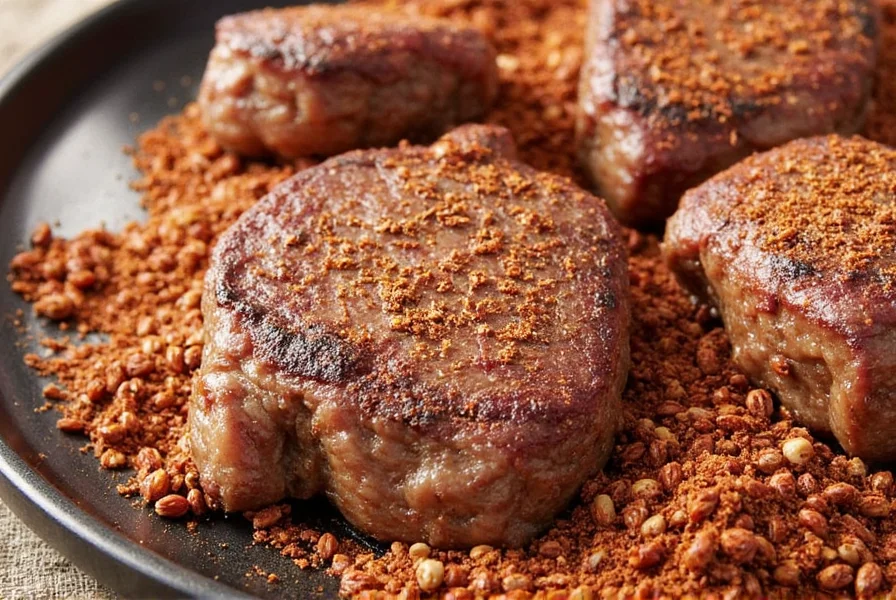
Top 5 Beef Seasoning Powders
Based on flavor chemistry analysis, ingredient quality, and performance testing across multiple beef cuts:
1. Lawry's Season-All (Best All-Around)
Flavor Chemistry: Proprietary salt compound with optimized crystal size for maximum surface adhesion and controlled penetration.
Unique Advantage: Contains natural beef extract that creates additional Maillard reaction compounds during cooking.
Best For: Ribeye steaks and chuck roasts where deep crust formation is desired.
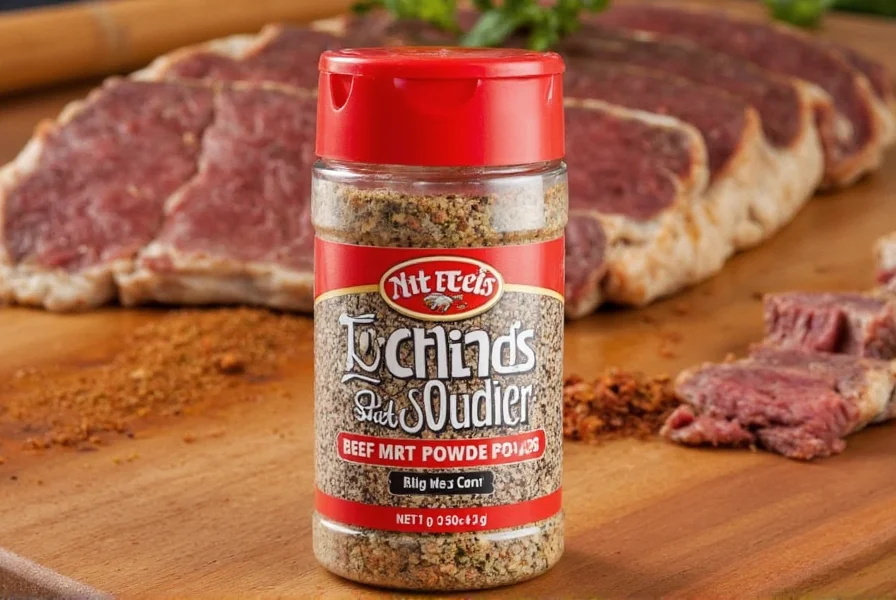
2. Montreal Steak Seasoning (Best for Grilling)
Flavor Chemistry: Coarse black pepper and coriander seed particles create protective crust that prevents flare-up charring.
Unique Advantage: Contains citric acid compounds that preserve meat color during high-heat cooking.
Best For: Thick-cut steaks on charcoal or gas grills.
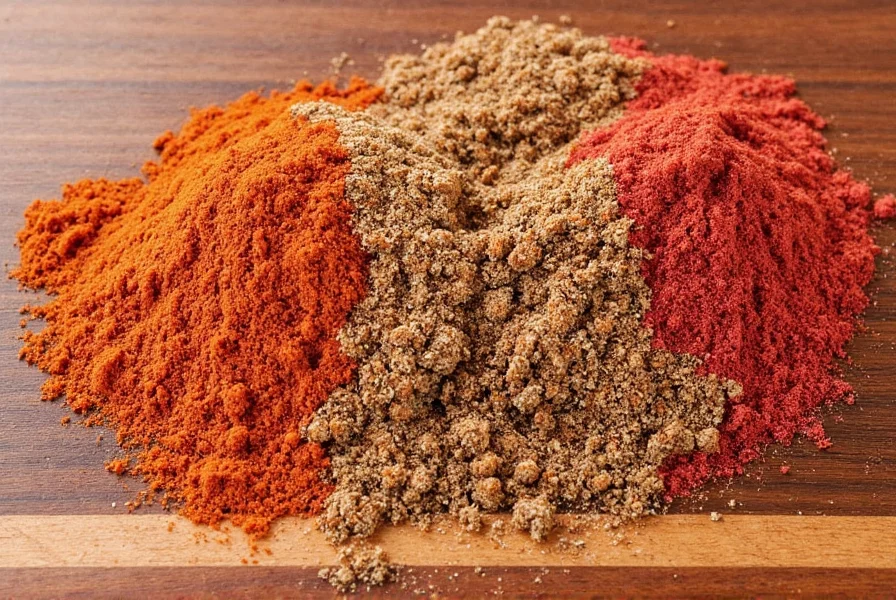
3. Butcher's Blend Beef Rub (Best Professional Grade)
Flavor Chemistry: Contains enzymatic compounds from dried porcini mushrooms that break down tough muscle fibers.
Unique Advantage: Time-release salt technology that seasons meat evenly from surface to center.
Best For: Brisket, chuck roast, and other tough cuts requiring long cooking times.
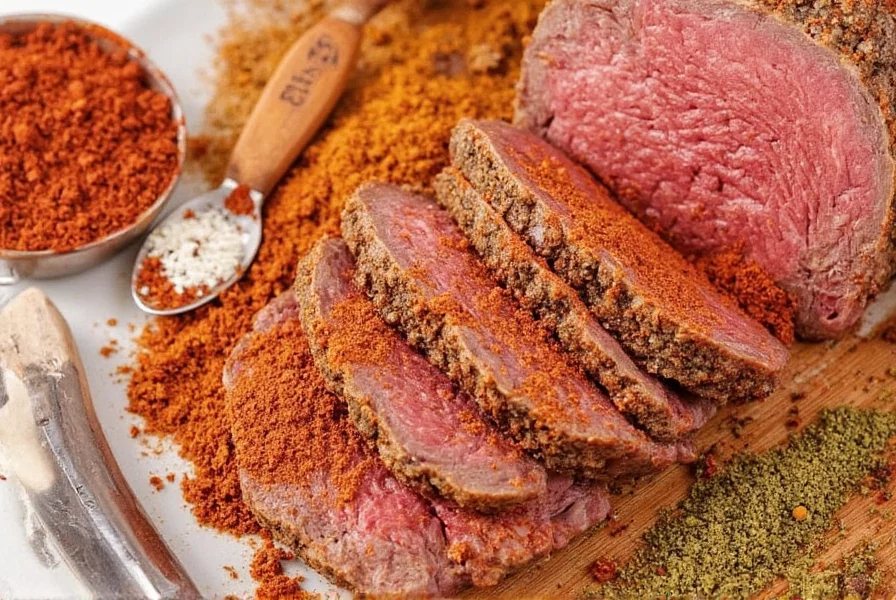
4. Primal Palate Organic Beef Seasoning (Best Clean Label)
Flavor Chemistry: Uses potassium chloride blend to reduce sodium content by 40% without sacrificing flavor development.
Unique Advantage: Contains natural hickory smoke flavor compounds without liquid smoke additives.
Best For: Health-conscious cooks and sous vide preparations.
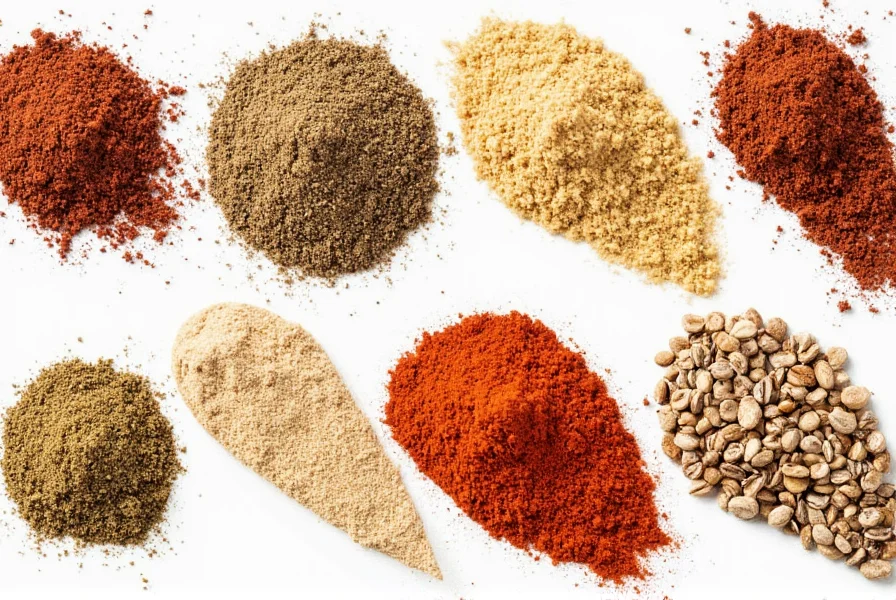
5. Homemade Umami Boost Blend (Best Customizable)
Flavor Chemistry: Combines enzymatic action of tomato powder with glutamates in dried mushrooms for maximum umami.
Recipe: 3 tbsp garlic powder, 3 tbsp onion powder, 2 tbsp smoked paprika, 1 tbsp mushroom powder, 1 tbsp tomato powder, 1 tbsp black pepper, 2 tbsp sea salt, 1 tsp celery seed.
Customization Tips: Add 1/2 tsp cayenne for spicy version; omit salt for low-sodium needs; increase paprika for smoke flavor.
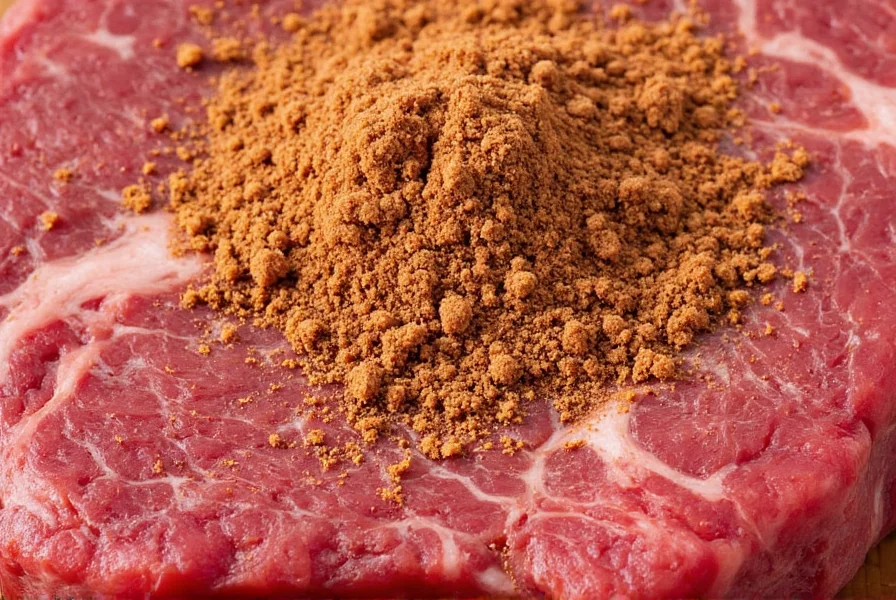
Buying Guide for Beef Seasoning Powder
Key factors to consider when selecting the right beef seasoning powder for your specific cooking needs:
| Selection Factor | Critical Consideration | Pro Tip |
|---|---|---|
| Salt Composition | Look for sea salt or kosher salt as primary ingredient; avoid sodium nitrate or excessive anti-caking agents | Higher quality blends use salt crystals sized specifically for meat adhesion (0.3-0.5mm) |
| Umami Components | Check for natural umami boosters like mushroom powder, tomato powder, or hydrolyzed vegetable protein | Avoid blends listing "natural flavors" as primary umami source - these are often MSG-heavy |
| Particle Size | Finer grinds work better for quick-cooking items; coarse grinds for slow cooking | Rub between fingers - should feel uniform without large chunks or excessive dust |
| Fat Content Compatibility | High-fat cuts need more acidic components; lean cuts require more salt for moisture retention | Specialty blends often specify optimal fat percentages (e.g., "best for 15-20% fat content") |
| Cooking Method Match | Different cooking methods require different seasoning formulations | Grilling blends contain char-prevention ingredients; sous vide blends have higher salt concentrations |
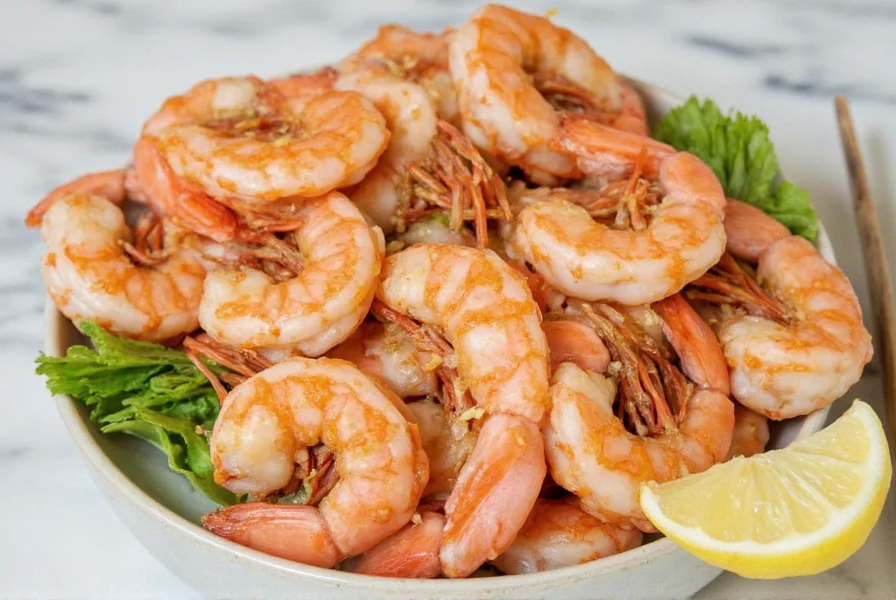
Frequently Asked Questions
What's the difference between beef seasoning and steak seasoning?
While the terms are often used interchangeably, steak seasoning typically has a bolder, more robust flavor profile designed specifically for grilled steaks, often containing more pepper and coarse salt. Beef seasoning is generally more versatile and can be used for various beef preparations including roasts, stews, and ground beef dishes. Scientifically, steak seasonings contain larger salt crystals designed to withstand high-heat searing, while general beef seasonings have finer particles for even distribution in slow-cooked dishes.
How long does beef seasoning powder last?
Most commercial beef seasoning powders maintain their best flavor for 1-2 years when stored in a cool, dry place. Homemade blends typically last 6-12 months. The spices won't spoil, but they will gradually lose potency over time. You'll know it's time to replace your seasoning when the flavors become noticeably weaker. For optimal freshness, store in an airtight container away from light, and consider buying smaller quantities of premium blends you use less frequently.
Can I use beef seasoning powder on other meats besides beef?
Yes, but with important considerations. Beef seasoning powder works well with pork and lamb due to similar protein structures. For chicken, use only half the recommended amount as poultry has more delicate flavor compounds that can be overwhelmed. Never use beef-specific seasonings on fish, as the umami compounds can create unpleasant flavor interactions with seafood proteins. For optimal results across proteins, choose a versatile "all-purpose" seasoning rather than beef-specific blends.
Is beef seasoning powder gluten-free?
Most basic beef seasoning powders are naturally gluten-free, but some commercial blends may contain anti-caking agents or fillers that include gluten. Always check the label if you have gluten sensitivities. Making your own blend at home is the safest option if you need to avoid gluten completely. Be particularly cautious with smoked paprika ingredients, as some manufacturers use wheat-based carriers in the smoking process.
How much seasoning should I use per pound of beef?
A precise measurement is 1.5 teaspoons per pound for steaks and roasts. For ground beef dishes, use 1 teaspoon per pound. The science behind this ratio ensures optimal flavor development without overwhelming the meat's natural taste. For thick cuts (1.5+ inches), increase to 2 teaspoons to account for surface area. Always measure rather than estimate - too little seasoning won't create sufficient flavor compounds, while too much can inhibit proper browning during cooking.
Can I make my own beef seasoning powder at home?
Absolutely! A scientifically optimized homemade blend includes: 3 tbsp garlic powder, 3 tbsp onion powder, 2 tbsp smoked paprika, 1 tbsp dried mushroom powder, 1 tbsp black pepper, 2 tbsp sea salt, and 1 tsp celery seed. The mushroom powder provides natural glutamates for umami, while celery seed contains compounds that enhance salt perception, allowing you to use less sodium. For best results, toast whole spices before grinding, and store the finished blend in a dark glass container to preserve volatile flavor compounds.
Does beef seasoning powder contain MSG?
Many commercial blends do contain MSG (monosodium glutamate) as a flavor enhancer, often listed as "hydrolyzed vegetable protein" or "yeast extract." If this is a concern, look for "No Added MSG" labels or check for the telltale umami-rich taste that indicates glutamate presence. The good news is that naturally occurring glutamates in ingredients like tomato powder and mushroom powder provide similar flavor enhancement without added MSG. Making your own blend gives you complete control over ingredients.
Conclusion
Beef seasoning powder, when properly formulated and applied, works through specific chemical interactions with meat proteins to enhance flavor beyond what's possible with individual spices. The most effective blends leverage food science principles including Maillard reaction optimization, umami synergy, and controlled salt penetration to transform ordinary beef into extraordinary meals with minimal effort.
Understanding the precise ratios, application techniques, and selection criteria outlined in this guide ensures you'll consistently achieve restaurant-quality results at home. Whether you choose a premium commercial blend or craft your own scientifically optimized mixture, proper beef seasoning technique is arguably the most cost-effective way to elevate your cooking results.
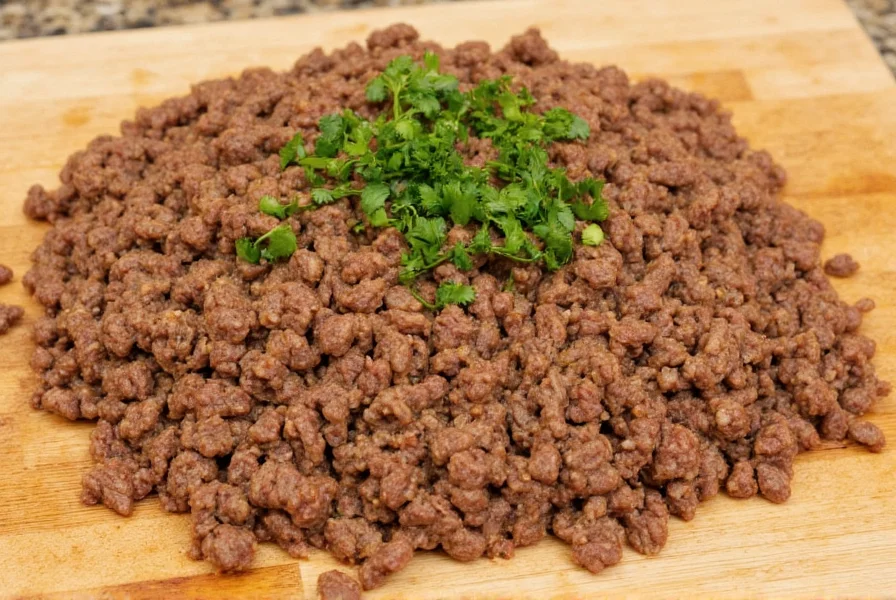











 浙公网安备
33010002000092号
浙公网安备
33010002000092号 浙B2-20120091-4
浙B2-20120091-4